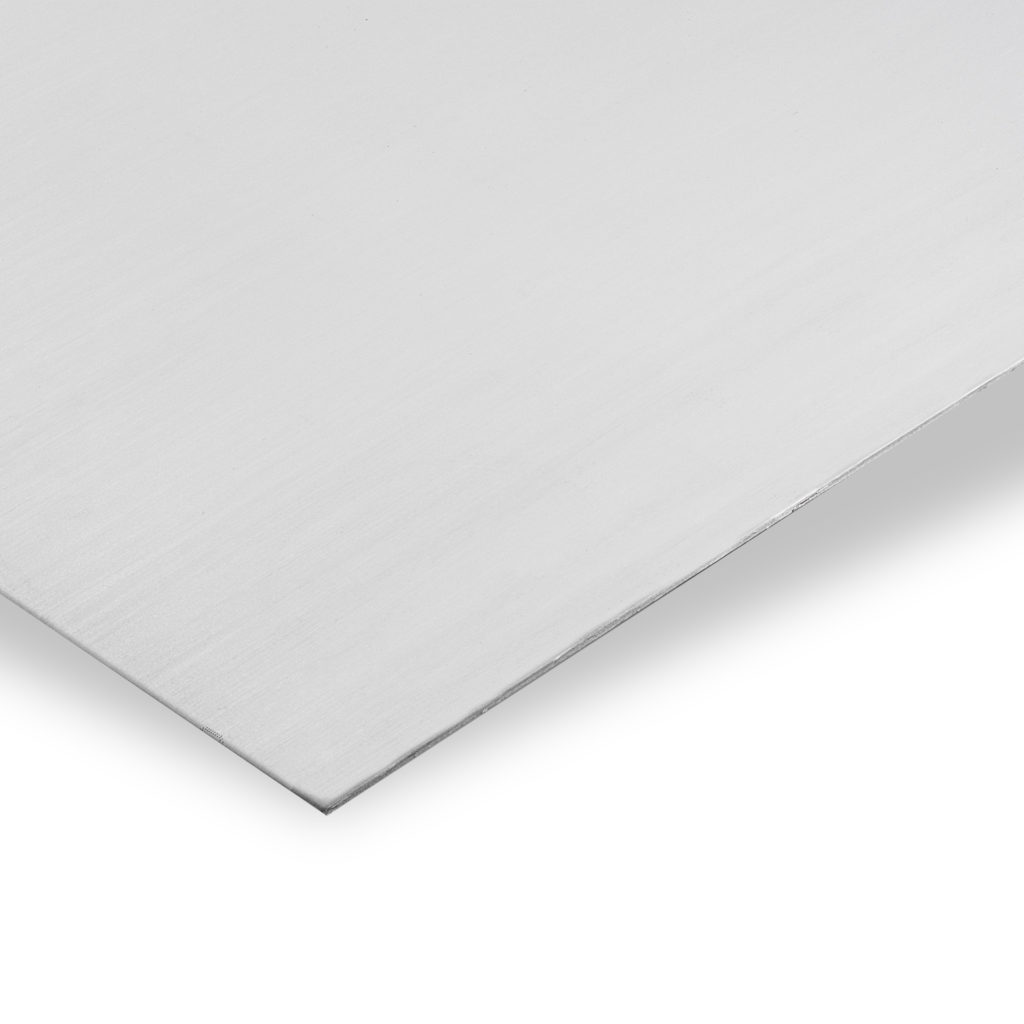
To calculate the weight of a steel plate, you need to answer a few questions. First, what type of steel are you working with? One of the key variables in any calculation of the weight of a steel plate is density. When calculating the weight of a steel plate, you can generally group steel plates into three categories in terms of their densities: carbon steel plate and stainless steel, 300 series and 400 series.
The density of different types of steel plate depends primarily on its chemical composition, which varies by small enough percentages between grades that it won’t affect the overall density. For example, if you’re working with carbon steel, you can safely assume a density of 490 pounds/cubic feet (imperial) or 7.85 tons/cubic meters (metric) whether you’re working with A36 or A588.
Kloeckner Metals is a full-line steel supplier and service center. Download our structural plate spec sheet to see what Kloeckner Metals routinely stocks.
Second, you’ll need to know the dimensions of the plate, including the length (L), width (W), and thickness (T). If you multiply the length, width, and thickness of the plate, you will arrive at the volume. Doing an imperial calculation, this would be cubic feet; with a metric calculation, it’d be cubic meters.
That’s it! To calculate the weight of a steel plate, all you need are four pieces of information:
It’s important to note that any calculations that you arrive at using standard steel metal calculators online, or doing the calculations yourselves with these numbers, should be considered estimations. They are calculated with nominal dimensions and standardized densities. In practice, the actual metal weight may vary significantly from the estimated weight because of variations of tolerance and composition observed in manufacturing.

To calculate the weight of carbon steel plate, you’ll need to know the thickness, width, length, and quantity. The typical density for carbon steel plate is 0.284 pounds per cubic inches (490 pounds/cubic feet) (imperial) or 7.85 tons/cubic meters (metric).
Depending on the grade, Kloeckner Metals typically supplies steel plate in widths of 48″, 60″, 72″, 84″, 96″ and lengths of 240″ to 480″ if mill rolled (any length can be provided when the plate is cut to length, coil, or hot rolled). Thickness is also highly variable depending on the grade but, for example, Kloeckner offers A36 in thicknesses starting at 3/16″ all the way up to 12″!
So, to calculate the weight of an A36 discrete, mill rolled plate that is 48″ wide, 96″ long, 3/8″ or .1875″ thick, you’d calculate:
Note it is always good practice to standardize units in any calculation. Kloeckner Metal also provides an easy carbon steel plate calculator to make the calculation instant.
To calculate the weight of 300 series stainless steel plate, you’ll also need to know the width, length, thickness, and quantity. The density of stainless steel 300 series is 0.289 pounds per cubic inch (501 pounds/cubic inch) (imperial) or 7.85 grams per centimeter cubed (metric).
Kloeckner Metals supplies stainless steel in grades 304 and 304L in the hot-rolled, annealed, and pickled finish. 304 and 304 are the most commonly specified stainless steels in the manufacturing industry. They’re versatile, general-purpose stainless steels because of their good corrosion resistance and formability.
Typical thicknesses of stainless steel 304 and 304L are 3/16″, typical widths 48″ and 60″, and typical lengths 96″ and 120″. So, to calculate the weight of a strip mill stainless steel plate 304L that is 48″ wide, 96″ long, and 3/16″ or 0.1875″ thick, you’d calculate:
Kloeckner Metal also provides an easy stainless steel plate (300 series) calculator to make the calculation instant.
The calculation for stainless steel plate in the 400 series is the same as the rest, just with a density of 0.28 pounds per cubic inch (484 pounds/cubic feet) (imperial) or 7.8 grams per centimeter cubed (metric).
Kloeckner Metals supplies stainless steel 400 series in the 409 grade in the hot rolled, annealed, & pickled finish. Compared to carbon steel, stainless steel 409 boasts good oxidation and corrosion resistance. You’ll often find it in automotive exhaust systems but, because of its good weldability, formability, and corrosion resistance, it’s used in a range of applications.
Kloeckner Metal also provides an easy stainless steel plate (400 series) calculator to make the calculation instant.

As you can see, all else being equal, the density is the secret ingredient that determines the weight of a steel plate. Luckily, densities are consistent enough that you can use a single number for entire types of metal plates. This simple calculation of length * width * thickness * density is all you need for accurate, back-of-the-napkin type calculations for your next project.
If you are looking for a partner in carbon and stainless steel plate, look no further than Kloeckner Metals, a nationwide supplier of high-quality plate that is routinely stocked in a range of grades and dimensions. We offer custom supply chain solutions, fast turnaround, and superior customer service. Contact us today for a quote.
Kloeckner Metals is a full-line steel supplier and service center. Kloeckner Metals combines a national footprint with the latest fabrication and processing technologies and the most innovative customer service solutions.

Steel base plates are fundamental elements employed in various manufacturing...
Metal fabrication is a critical process that transforms raw metal...
The solar industry has undergone a significant transformation by incorporating...

X
The Kloeckner Metals website uses modern technologies. Unfortunately, your browser doesn't support those technologies.
Download the latest version of one of these browsers to experience the site: